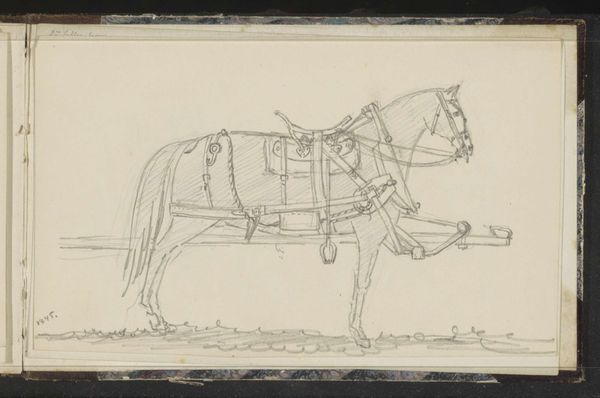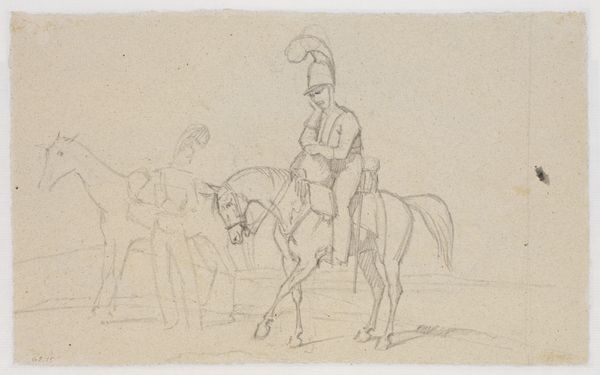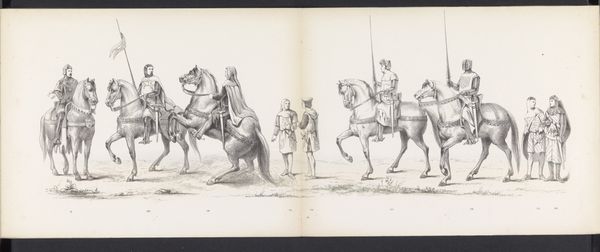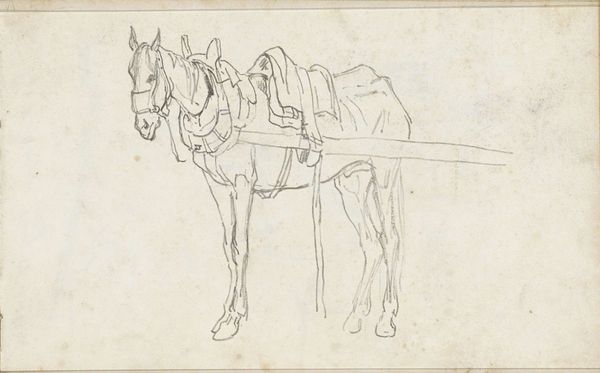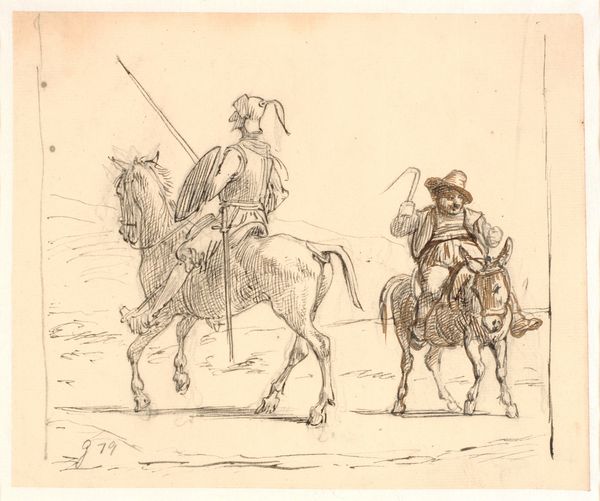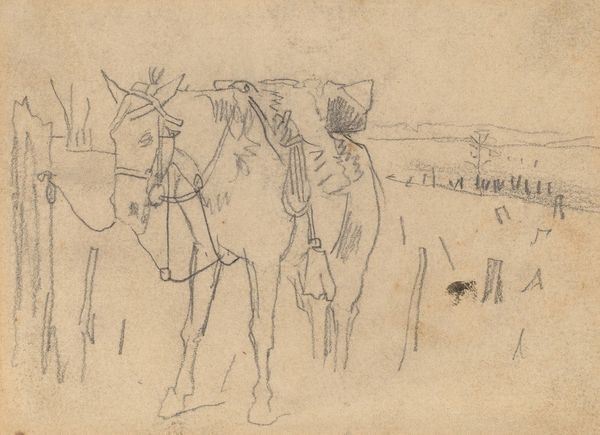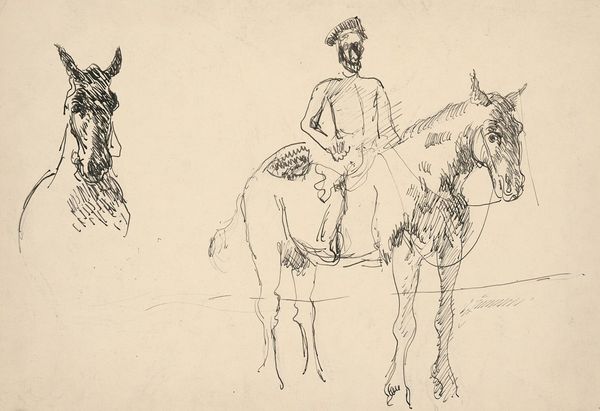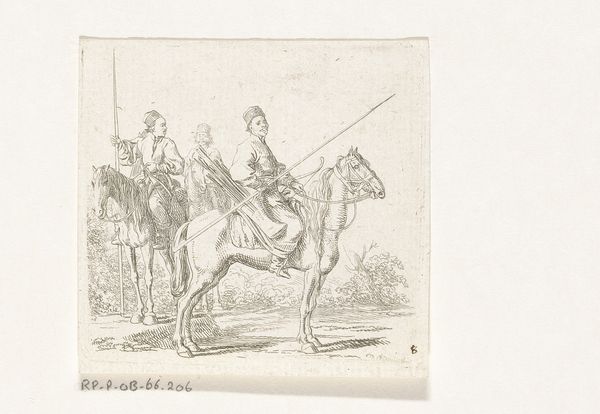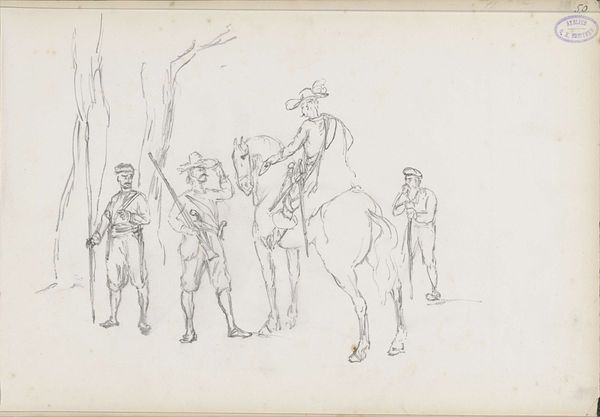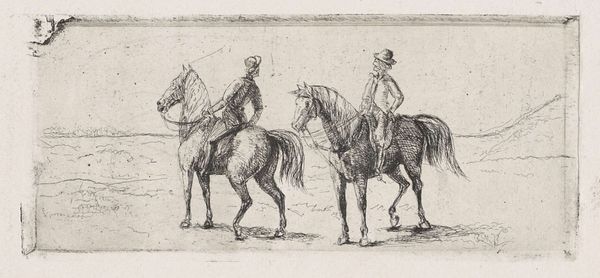
drawing, pencil
#
portrait
#
drawing
#
landscape
#
figuration
#
romanticism
#
pencil
#
horse
#
academic-art
Copyright: Rijks Museum: Open Domain
Editor: This is "Militair met twee paarden" by Christian Heinrich Gottlieb Steuerwald, created around 1838 using pencil. It has such a tentative, sketch-like quality. How would you interpret this drawing? Curator: Let us examine its formal construction. The linearity is quite striking, is it not? Notice how Steuerwald uses primarily line to delineate form, creating spatial recession largely through implied depth and minimal shading. Consider the interplay between the outlined forms and the negative space. Editor: Yes, it almost feels like he’s more interested in the outline than in filling in the shapes. How does that contribute to the work? Curator: Precisely. The dominance of line prioritizes the drawing's graphic quality over mimetic representation. Think about how the repeated diagonal strokes in the horses’ bodies create a sense of volume, even in the absence of full tonal modeling. Moreover, how the formal choices complement the composition is quite relevant to its narrative elements. Editor: It makes it seem more immediate, less concerned with realism. What’s significant about the figures themselves? Curator: The military figure is rigidly upright. It creates a hierarchical structure with the soldier in control. Is there tension between the subjects? And note the contrast between the solid grounding of the soldier, and the fluidity in depiction of horses to achieve its visual form. It lacks details, such as shading, one expects with figuration artwork during the era. Editor: I see that now. The solidity and form in its details seem deliberate to present certain relationships among subjects in its overall message, yet incomplete. Thank you! Curator: Indeed. Analyzing its visual structure opens interesting points for a further debate, one can now see its deeper significance and aesthetic.
Comments
No comments
Be the first to comment and join the conversation on the ultimate creative platform.

